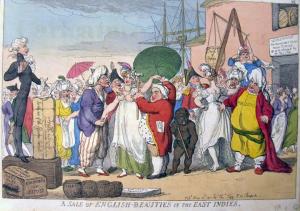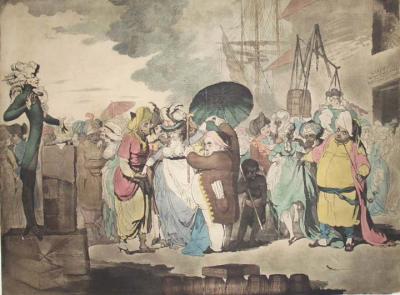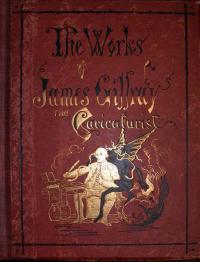The English artist James Gillray was a leading force in the Golden Age of British caricature, completing at least 1,000 prints between 1779 and 1811. As a young student in London’s Royal Academy, at the same time as William Blake, Gillray supported himself by engraving for hire and published a number of prints under fictitious names.
The caricature shown here comes from early in his professional career. The scene reverses the roles of slave and slave owner, with English women being marketed to East Indian men. The ship has barely unloaded its cargo, when the auction begins. There is a warehouse on the right “for unsaleable goods from Europe, to be returned by the next ship,” where unwanted women are already exiting. The auctioneer stands at a podium made of bales of “britches” of British Manufacture, much the same as the women. At his feet are boxes of books of sexual content marked “for the amusement of Military gentlemen.” Barrels of “Leakes Pills” line the bottom of the print, a contemporary remedy for venereal disease.

A Sale of English Beauties was a very popular image but in the early nineteenth century Gillray was hospitalized and stopped printing. Publisher Thomas Tegg commissioned another caricaturist, Thomas Rowlandson, to copy the plate for a new edition. Smaller in size and less complex in design, Rowlandson went out of his way to make the satirical text in the image readable and finished the print in bright, bold colors that grabbed the attention of pedestrians passing Tegg’s printshop. Finally, the new publisher and date were inscribed at the bottom right, without any credit to Gillray.

